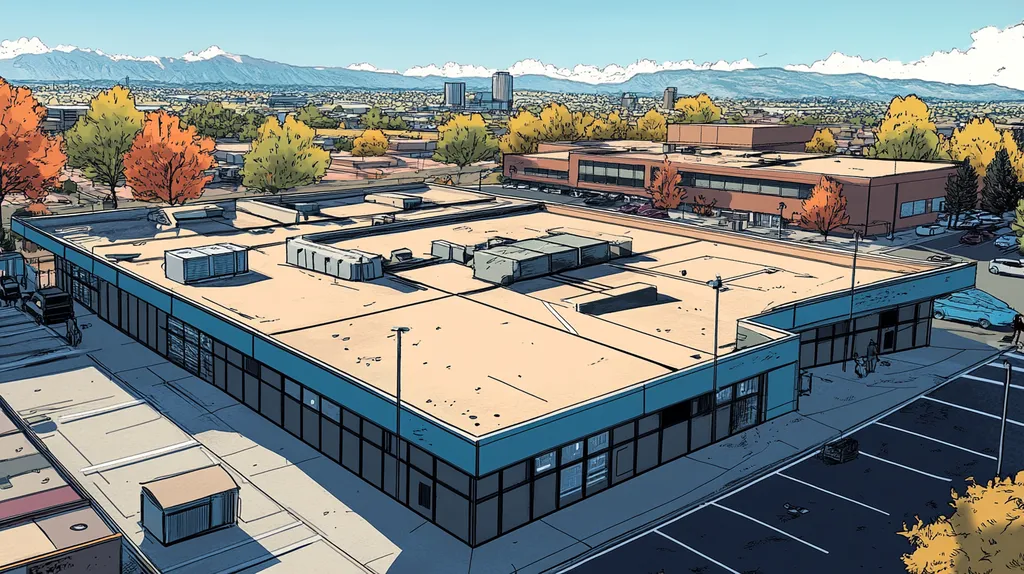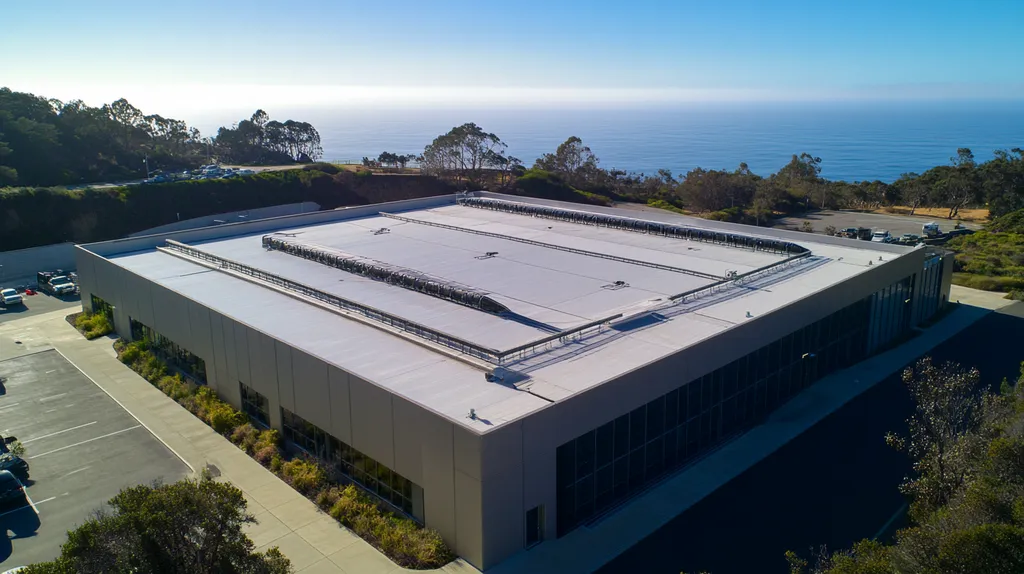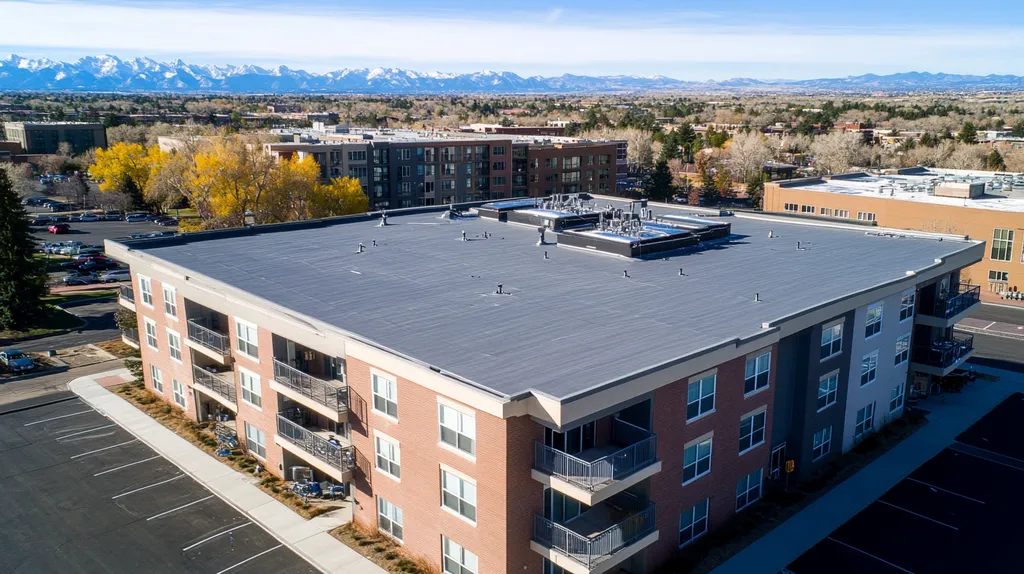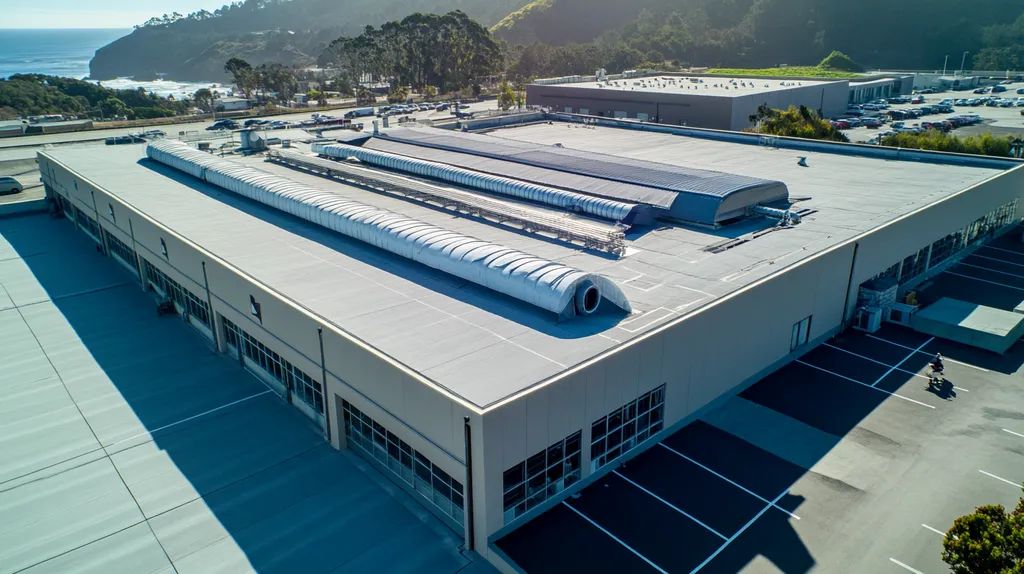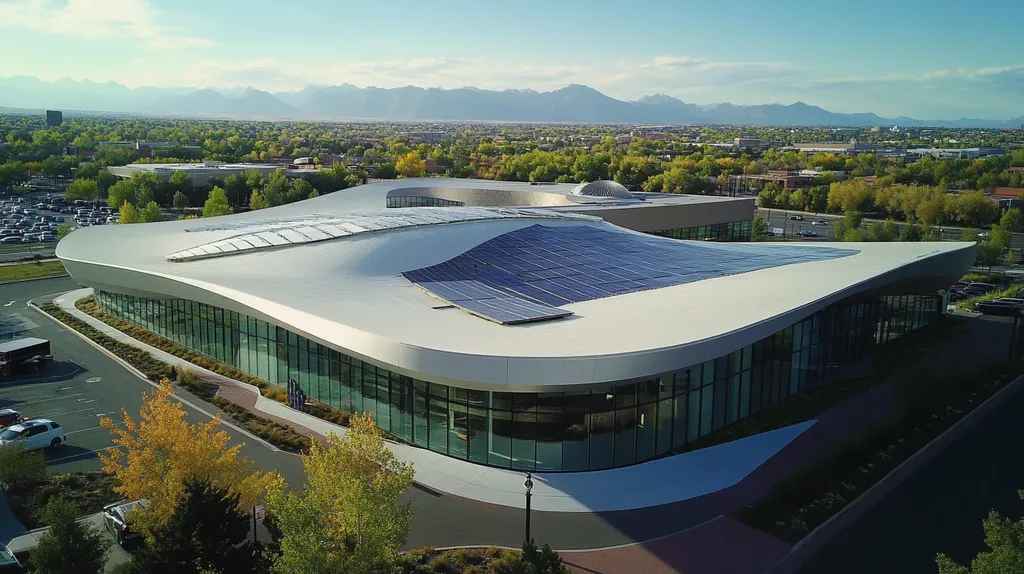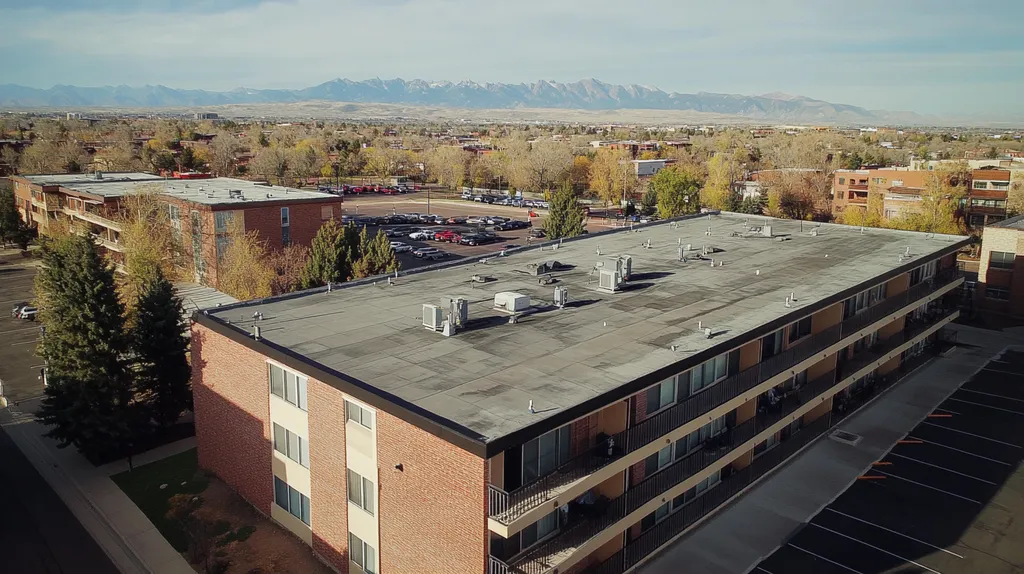Inadequate roof preparation causes over 85% of industrial coating failures, resulting in millions of dollars in premature repairs and replacements annually. For facility managers, proper preparation represents the difference between a coating system that lasts 20+ years and one that fails within months.
Understanding the essential steps of surface preparation – from cleaning and repairs to moisture testing and primer application – determines project success or failure. This comprehensive guide examines the critical elements of industrial roof preparation and provides actionable insights for achieving optimal coating performance.
SECTION 1: THE BASICS EXPLAINED
Proper roof preparation determines the success or failure of coating applications on industrial roofs. Studies indicate that over 85% of premature coating failures stem from inadequate surface preparation, leading to millions in unnecessary repair costs annually. Without proper preparation, even the highest quality coating materials will fail to deliver their promised protection and longevity.
What It Is (In Plain Language)
Roof preparation encompasses all activities required to create an optimal surface for coating adhesion. This includes thorough cleaning, structural repairs, and surface treatments that ensure maximum coating performance.
The process begins with a comprehensive inspection to identify existing damage, moisture issues, and areas requiring special attention. This assessment guides the preparation strategy and helps prevent overlooking critical problems.
Next comes the cleaning phase, which removes dirt, debris, oxidation, and any loose materials that could compromise coating adhesion. Professional-grade cleaning equipment and specific chemical cleaners may be required depending on the roofing material.
Finally, repairs address any structural issues, seal gaps, and create a uniform surface. This may include patching holes, reinforcing seams, or treating rust spots on metal roofs.
Why It Matters (To Your Building)
The roofing substrate must be properly cleaned and dry prior to coating application, as preparation is the most important aspect of a coatings job. Improper roof preparation typically leads to coating failure well before the warranty period expires. (source: FacilitiesNet)
Poor preparation creates weak points where moisture can penetrate beneath the coating. These vulnerabilities often result in blistering, peeling, and eventual coating system failure.
Proper preparation extends coating life expectancy by 40-50% compared to rushed or incomplete preparation. This translates to significant cost savings over the life of the roof.
Building owners who invest in thorough preparation protect their coating investment and avoid the disruption of premature recoating or repairs.
How It Works
The preparation process follows a systematic approach that varies based on roof type and condition. Each step builds upon the previous one to create an ideal surface for coating adhesion.
Initial cleaning removes surface contaminants through pressure washing, scrubbing, or vacuum systems. The cleaning method must match the roofing material to prevent damage while ensuring thorough debris removal.
After cleaning, the roof must completely dry before further work proceeds. Moisture testing confirms acceptable levels before moving forward with repairs or primer application.
Surface treatments may include primers, sealers, or rust inhibitors depending on the substrate material. These treatments create chemical bonds that enhance coating adhesion and performance.
The final inspection verifies that all preparation requirements have been met before coating application begins. This quality control step prevents costly rework and ensures optimal coating performance.
SECTION 2: PRACTICAL APPLICATIONS
Proper roof preparation represents the cornerstone of successful coating applications in industrial settings. Studies show that inadequate preparation reduces coating lifespan by up to 75% and leads to premature system failures. Surface contamination, moisture intrusion, and poor adhesion create vulnerabilities that compromise even premium coating materials.
Common Uses & Examples
Industrial facilities commonly employ roof coatings to extend membrane life, increase reflectivity, and enhance waterproofing protection. Manufacturing plants often utilize reflective coatings to reduce cooling costs while protecting equipment from moisture damage.
Using a pressure washer effectively removes surface contaminants and creates an optimal substrate for coating adhesion. The cleaning method must align with the specific roofing material to prevent damage while ensuring thorough preparation. (source: CoatingsPro Magazine)
Distribution centers frequently apply reinforced coating systems at roof penetrations and high-traffic maintenance paths. These areas require intensive cleaning and repair before coating to prevent premature wear.
Cold storage facilities benefit from specialized preparations that address thermal cycling and condensation concerns. Proper surface preparation helps prevent coating delamination in these challenging environments.
When You Need It Most
Aging roofs approaching warranty expiration demand thorough preparation to maximize coating effectiveness. This includes addressing ponding water areas, deteriorated flashings, and failing seams before coating application.
Buildings in harsh environments require enhanced preparation to combat UV exposure, chemical fallout, or salt air degradation. Surface treatments must account for these environmental factors to ensure coating durability.
Facilities experiencing active leaks need comprehensive preparation to identify and repair all water entry points. This often involves infrared scanning, core sampling, and detailed substrate evaluation.
Emergency repairs following storm damage necessitate proper preparation despite time pressures. Rushing this critical step leads to coating failures and repeated repair cycles.
Interactions With Other Systems
Roof coatings must integrate seamlessly with existing drainage patterns and slope configurations. Proper preparation ensures positive drainage while maintaining consistent coating thickness across the surface.
HVAC units, solar installations, and other rooftop equipment require special attention during preparation. Creating proper transitions between coated areas and equipment curbs prevents water infiltration.
Building envelope components like parapets, expansion joints, and wall flashings demand careful preparation. These critical interfaces often determine overall coating system performance.
Lightning protection systems and safety tie-offs need appropriate preparation to maintain watertight conditions. This includes reinforcing attachment points and ensuring compatible coating materials.
SECTION 3: KEY TERMINOLOGY DECODED
Clear understanding of roofing terminology directly impacts project success and cost control in industrial settings. Studies show that miscommunication about technical terms leads to specification errors in 35% of coating projects, resulting in premature failures and warranty disputes. Mastering essential terminology helps facility managers make informed decisions and effectively communicate with contractors.
Essential Terms Explained
The substrate forms the foundation for any coating system, typically consisting of existing roofing materials like metal, modified bitumen, or single-ply membranes. Its condition and composition determine preparation requirements and coating compatibility.
Adhesion measures the coating’s ability to bond with the substrate and maintain that connection over time. Poor adhesion leads to peeling, blistering, and system failure, making it a critical performance indicator.
Surface tension describes how well liquids spread across and wet out on the substrate. Higher surface tension often indicates contamination that requires additional cleaning before coating application.
Proper surface preparation creates optimal conditions for coating adhesion and performance. The surface must be clean and dry to achieve proper bonding between coating and substrate. (source: FacilitiesNet)
Industry Jargon Translated
Dry film thickness (DFT) measures the final coating thickness after curing. This measurement, typically in mils, determines protection levels and material consumption rates.
Substrate profile refers to the surface texture and roughness that affects coating adhesion. Smoother profiles may require mechanical abrading while rougher surfaces might need filling.
Flash rust describes surface oxidation that occurs between cleaning and coating application. This condition requires immediate attention to prevent coating failure.
Recoat window specifies the time frame when additional coating layers can be applied without special surface preparation. Missing this window necessitates mechanical abrading of the surface.
Measurement & Units Simplified
Coverage rates indicate how many square feet one gallon of coating will cover at a specified thickness. These rates help calculate material quantities and verify proper application thickness.
Mil thickness represents coating depth, with one mil equaling one-thousandth of an inch. Most industrial coatings require between 15-30 mils total dry film thickness for adequate protection.
Relative humidity and dew point measurements determine acceptable application conditions. Coating application should stop when relative humidity exceeds 85% or surface temperature approaches the dew point.
Pull strength testing measures coating adhesion in pounds per square inch (PSI). This quantifiable metric verifies proper surface preparation and coating performance.
SECTION 4: DECISION FACTORS
Roof preparation decisions directly impact the success or failure of coating applications in industrial settings. Research shows that inadequate preparation choices lead to coating failures in over 70% of cases within the first three years. Property owners face critical decisions about methods, materials, and timing that determine whether their coating investment will deliver decades of protection or require premature replacement.
Cost Considerations
Initial preparation costs typically represent 40-60% of a total coating project budget. This includes equipment, labor, materials, and any specialized treatments required for the specific roofing substrate.
The substrate must be properly cleaned and dry prior to coating application, as preparation is the most important aspect of a coatings job. Improper roof preparation typically leads to coating failure well before the warranty period expires. (source: FacilitiesNet)
Labor costs vary significantly based on the complexity of preparation requirements. Simple pressure washing may suffice for some surfaces, while others demand extensive repairs and chemical treatments.
Equipment selection impacts both cost and quality. Professional-grade preparation tools deliver superior results but require higher initial investment compared to consumer-grade alternatives.
Performance Trade-offs
Surface cleanliness directly affects coating adhesion strength. Even minor contamination can reduce bond strength by 50% or more, leading to premature coating failure.
Preparation timing influences coating performance. Rushing the process or applying coatings before surfaces are properly dried compromises the entire system.
Environmental conditions during preparation affect results. Temperature, humidity, and wind speed must fall within acceptable ranges to achieve optimal surface preparation.
Different preparation methods offer varying degrees of effectiveness. Mechanical cleaning may provide better results than chemical cleaning but requires more time and labor.
Lifespan & Durability Factors
Surface profile depth impacts coating adhesion and longevity. Proper preparation creates an ideal profile that maximizes coating bond strength and durability.
Moisture content in the substrate affects coating performance. Complete drying after cleaning prevents trapped moisture from causing coating failures.
Repair quality during preparation influences system durability. Properly addressed defects and seams provide stable foundation for coating application.
Weather exposure during preparation can affect results. Protection from rain and contaminants between cleaning and coating application preserves surface readiness.
SECTION 5: COMMON CHALLENGES
Industrial roof preparation faces numerous obstacles that can compromise coating performance and longevity. Industry data shows that 65% of coating failures stem from inadequate surface preparation and unaddressed challenges during the pre-coating phase. Understanding and effectively managing these challenges is crucial, as preparation errors can reduce coating lifespans by up to 70% and lead to extensive repair costs.
Frequent Problems & Solutions
The surface to be coated must be clean and dry, or adhesion will not occur. If the selected roof coating does not properly adhere to the surface, the coating eventually will disbond from the surface, resulting in an unsuccessful project. (source: FacilitiesNet)
Moisture entrapment remains a persistent challenge, particularly in climates with high humidity or frequent precipitation. Implementing moisture detection surveys and allowing adequate drying time between cleaning and coating application prevents trapped moisture from compromising adhesion.
Surface contamination from industrial processes, including chemical deposits and airborne pollutants, can prevent proper coating adhesion. Professional cleaning methods matched to specific contaminant types ensure thorough removal without damaging the substrate.
Structural movement and thermal cycling create stress points that must be properly addressed before coating. Installing appropriate expansion joints and reinforcing vulnerable areas prevents coating failure at these critical points.
Warning Signs To Watch For
Visible surface defects like blisters, cracks, or delamination indicate underlying problems requiring immediate attention. These issues must be thoroughly investigated and repaired before coating application proceeds.
Changes in surface texture or appearance often signal chemical contamination or degradation. Professional testing can identify specific contaminants and determine appropriate cleaning methods.
Ponding water areas require special attention, as they indicate drainage problems that coating alone cannot solve. Installing auxiliary drains or building up low spots creates proper water flow patterns.
Rust or corrosion on metal components signals potential structural concerns. Treatment with appropriate rust inhibitors and primers prevents further deterioration beneath the coating.
Preventative Approaches
Regular roof inspections identify potential problems before they affect coating performance. Developing a comprehensive inspection schedule with detailed documentation prevents oversight of critical issues.
Environmental monitoring during preparation ensures conditions remain within acceptable ranges. Temperature, humidity, and wind speed measurements guide timing of cleaning and coating activities.
Quality control testing throughout the preparation process verifies surface readiness. Adhesion tests, moisture readings, and surface profile measurements provide quantifiable data for decision-making.
Staff training in proper inspection techniques and problem identification creates an effective early warning system. This proactive approach helps maintain coating system integrity throughout its service life.
SECTION 6: NEXT STEPS & RESOURCES
Industrial roof preparation represents a critical investment decision that impacts long-term facility operations and maintenance costs. Studies show that over 60% of coating failures stem from inadequate preparation planning and resource allocation. Without proper guidance and standards compliance, even well-intentioned preparation efforts can lead to premature coating breakdown, increased energy costs, and expensive repairs that disrupt business operations.
Questions To Ask Providers
Proper surface preparation is essential before applying any roof coating, and the level of preparation depends on the current condition of the roof. (source: FacilitiesNet)
Request detailed information about surface evaluation methods, including moisture detection technology and adhesion testing protocols. Quality contractors utilize infrared scanning and core sampling to identify hidden moisture issues that could compromise coating performance.
Verify the provider’s quality control procedures for weather monitoring and environmental conditions during preparation. Surface temperature, humidity levels, and wind conditions significantly impact cleaning effectiveness and drying times.
Review their documentation processes for inspection findings, preparation methods, and material specifications. Complete records protect warranty coverage and provide valuable reference data for future maintenance.
Industry Standards & Guidelines
Reference ASTM D6083 standards for acrylic coating preparation requirements and NRCA guidelines for substrate conditioning. These documents establish minimum cleanliness levels and surface profiles needed for optimal coating adhesion.
Follow FM Global property loss prevention data sheets for roof preparation specifications. These standards help ensure preparation methods align with insurance requirements and risk management protocols.
Consult OSHA regulations regarding fall protection and chemical handling during preparation activities. Safety compliance prevents costly work stoppages and protects both workers and facility operations.
Review local building codes and environmental regulations that govern roof cleaning methods and chemical use. Compliance prevents fines and ensures preparation activities meet regional requirements.
Further Learning Simplified
Access technical bulletins and application guides from major coating manufacturers. These resources provide specific preparation requirements for different substrate types and coating systems.
Participate in industry association webinars that focus on roof preparation techniques and emerging technologies. Online learning platforms offer flexible access to expert knowledge and peer discussions.
Attend regional roofing conferences to evaluate new preparation equipment and methods. Trade shows provide hands-on demonstrations of surface cleaning technologies and moisture detection tools.
Subscribe to commercial roofing publications that regularly feature preparation case studies and best practices. These real-world examples illustrate both successful approaches and common pitfalls to avoid.
The Bottom Line
With over 85% of industrial coating failures traced directly to inadequate preparation, the stakes could not be higher for facility managers and building owners.
Proper surface preparation requires methodical attention to cleaning, repairs, moisture management, and environmental conditions – there are no shortcuts to success.
The difference between a coating system that lasts 20+ years and one that fails within months often comes down to preparation quality.
By following industry standards, working with qualified contractors, and investing in thorough preparation, facility managers can avoid the costly cycle of premature coating failure and replacement that plagues poorly prepared roofs.
The future performance of any industrial roof coating system depends on the dedication to proper preparation today.
FREQUENTLY ASKED QUESTIONS
Q. What defines proper roof preparation for a commercial roof?
A. Proper roof preparation involves ensuring a clean, dry surface for coating adhesion. It includes inspection, thorough cleaning, surface treatments, and necessary repairs to enhance coating performance and longevity.
Q. How does inadequate preparation affect industrial roof coatings?
A. Inadequate preparation can significantly reduce the lifespan of coatings by up to 75%. It creates vulnerabilities that lead to premature failures and increased maintenance costs.
Q. What key terms should I understand about commercial roof coatings?
A. Essential terms include substrate, adhesion, and dry film thickness, which affect project success and performance. A solid understanding enhances communication with contractors and decision-making.
Q. What decision factors influence industrial roof preparation?
A. Key factors include cost, performance trade-offs, timing, and the adequacy of surface preparation methods chosen for a coating project, impacting overall durability and effectiveness.
Q. What common challenges arise during industrial roof preparation?
A. Frequent challenges include moisture entrapment, surface contamination, and structural movement. Addressing these during preparation is crucial for ensuring successful coating adhesion and performance.
Q. What resources can assist with industrial roof preparation?
A. Industry resources include ASTM standards, quality control guidelines, and educational materials from coating manufacturers. These provide essential knowledge for effective preparation and compliance with regulations.
Q. How can I prevent coating failures on my industrial roof?
A. Preventative measures include regular inspections, ensuring proper moisture management, and adhering to established preparation protocols. Training staff in spotting potential issues can also enhance system integrity.

